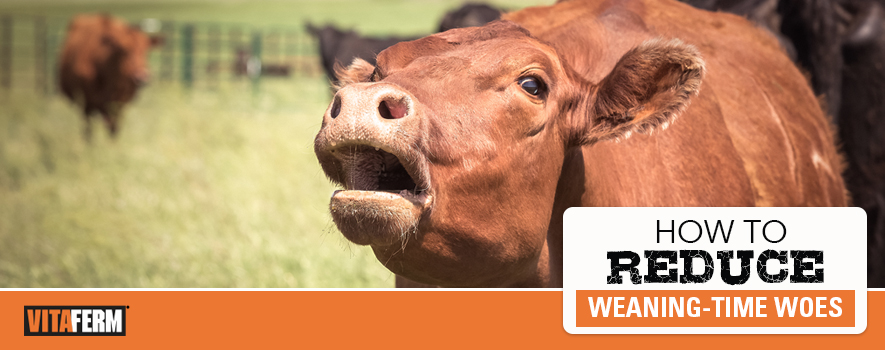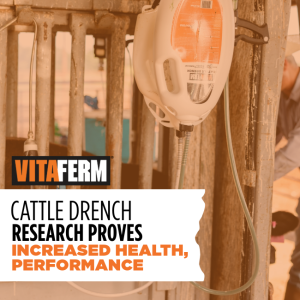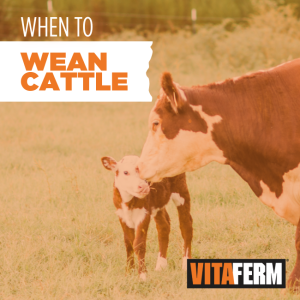Weaning time in the cattle business is ultimately the most stressful time in the calf’s life. However, with proper preparation, good management practices and a solid plan, you can decrease the stress incurred on your calves and yourself at weaning time.
When preparing for weaning and making a management plan, there are several conditions to contemplate. You’ll want to consider the environmental factors that you’ve faced during the year, such as precipitation and temperatures, which impact feed availability. Also consider calf age and size, cow condition and the market to know if there will be strong demand for your calves when you are ready to sell them.
Timing is Everything
Lindsey Grimes-Hall, Nutrition and Field Sales Support for BioZyme® Inc., said the industry average for weaning calves is 6-to 8-months-old, with most calves weaned between 7-and 8-months-old. The age you decide to wean will likely be most dependent on feed resources available and the condition of the cows. Remember, weaning is also a time when you are trying to breed back a cow and grow a new pregnancy, not just continue to grow the current calf at side.
“This year has been a great example of that. We actually weaned our calves early because of how cold and wet it was last year. Our cows were losing weight, so we went ahead and early weaned,” said Grimes-Hall who runs an Angus and SimAngus operation with her family near Hillsboro, Ohio. “Now, if you have a really good year, and you have a warm spring with lots of rain and lots of grass, you might be ok to go longer, closer to 8-months-old.”
In addition to cow condition and feed availability, Grimes-Hall suggests keeping a close watch on calf supply and demand in the market place. If you think there might be an upcycle in the market and demand is going to increase when your calves are closer to the six-month mark than eight, then it might be wise to wean and sell them when you can get the most profit.
Early Weaning Advantages
Early weaning, like Grimes-Hall mentioned, does have its advantages. Typically, early weaning occurs when the calves are 3-to 5-months-old. Weaning early is the easiest way to help manage your cows’ condition, and you won’t have to put as much feed or hay back into her to get her condition back if you pull a big calf from her early-on.
“If you have a cow that is losing weight or one you want to keep from getting too thin, you pull that calf off early, because there is nothing that will suck the condition off of a cow faster than a really big, heavy old calf on her side,” Grimes-Hall said.
Weaning Methods Impact Stress
It is impossible to wean without causing some stress to both the calf and the cow; however, particular strategies will cause less stress on both parties and are more calf-friendly.
Fence-line weaning is the least stressful weaning method. With fence-line weaning, you would separate the calves from their mothers and then pen them across the fence from one another where they can still see and hear one another. Research has proven that calves will eat more and put on pounds faster when using the fence-line method.
Another commonly used approach is abrupt weaning, where the cows and calves are separated but remain on the same land. The cattle might be able to hear each other, but they can’t see each other, so the calves become accustomed to being alone.
Two other less common practices, but that are still engaged on cattle operations are day weaning and slat or nose weaning. Day weaning is a gradual weaning where the cow and calf are separated during the day and reunited in the evening for a window of time so the calf can nurse in the morning and evening. This method is most common with livestock exhibitors who are getting calves broke and ready to show. Another strategy is nose or slat weaning, where a plastic slat or guard is inserted into the calf’s nose to prevent it from nursing. The pairs are still run together, and the calf can still drink water and eat grass; however, it can’t nurse and after a week to two weeks will not have the desire to suck.
Perhaps the most stressful weaning method is one that is still used quite regularly. Many producers will wean calves, load them in the trailer and take them to the sale barn immediately. This method is usually used when space and labor is in short supply. It doesn’t allow the calves any time to recover from the stress of being removed from their mothers prior to being hauled and introduced to a new environment.
Be Proactive with Health, Nutrition
It is imperative to keep these young calves as healthy as possible prior to weaning. Grimes-Hall suggests getting calves their proper vaccinations or vaccine boosters about a month prior to weaning. Because each geographic location and situation is slightly different, consult with your veterinarian on what exactly you need. Most pharmaceuticals offer a 7-way or 5-way vaccine to treat multiple bugs. You will also want to worm calves when you vaccinate them.
“If you wait until weaning to vaccinate, that will cause extra stress on the calves. Their immune system is going to be compromised in the first place, and the extra stress will impact the effectiveness of the vaccine, so plan ahead,” Grimes-Hall said.
Of course, nutrition is crucial to eliminating your calves’ stress, and continuing its post-weaning performance. It is vital to keep their diets somewhat consistent to what they have been accustomed to. Grimes-Hall said that a huge, significant diet change will only add to the stress and confusion, so plan accordingly.
If the calves have been on a total-grass diet, you don’t want to feed them much grain; however, you do want to offer them a high-quality hay or forage, to continue them on a consistent diet. And if you’ve had them on creep feed while they were still with the cow, continue the same creep feed for a two to three-week period post-weaning while transitioning them to a grower ration.
“Besides birth, this is the time that will really set a calf up for performance potential for the rest of its life. Keep them on a positive plane of nutrition. If too much damage is done, you’ll always have a chronically sick calf, you will constantly be behind and be spending money on more feed for it. That is where Vita Charge® is so crucial and helpful in that transition period,” she said.
Vita Charge is a line of products that supports digestive health and promotes feed and water intake during times of stress and recovery. With Amaferm®, a precision prebiotic research-proven to combat stress by supporting the animal’s own immune system, significantly increasing intake and nutrient utilization, and MOS to trap and expel pathogens, limiting their ability to do harm, the Vita Charge products offer a winning combination to promote health to those fresh-weaned calves.
Vita Charge comes in a Cattle Drench, designed to be administered the first day of weaning, and a Stress Tub, a convenient way for the calves to get their daily dose of Vita Charge for 14 to 21 days post-weaning. It is not a mineral supplement but does work in concert with your mineral.
Weaning. Don’t make it stressful on you or your calves. Be prepared, create a plan and be sure to have your Vita Charge on hand prior to the separation day.



